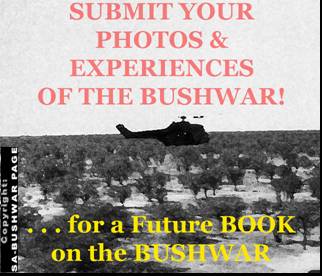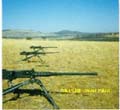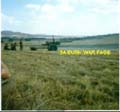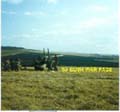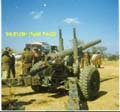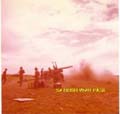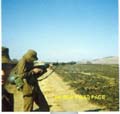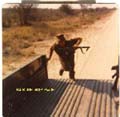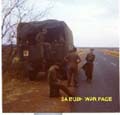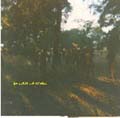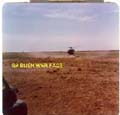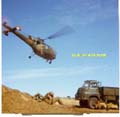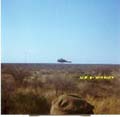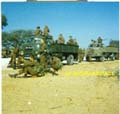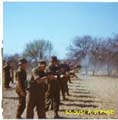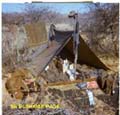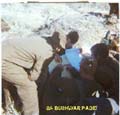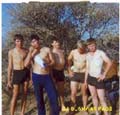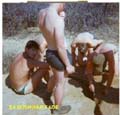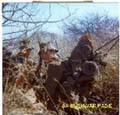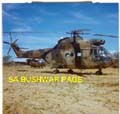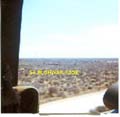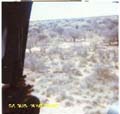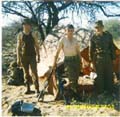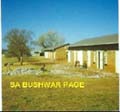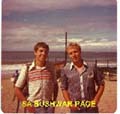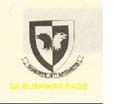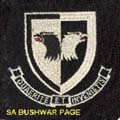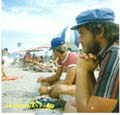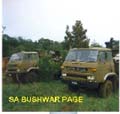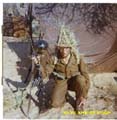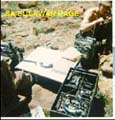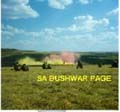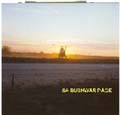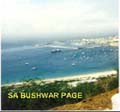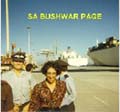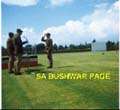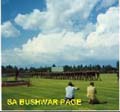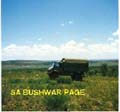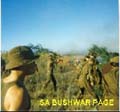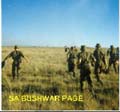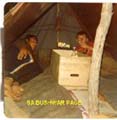| The South-African Bush War: |
| Brief overview of my Army career in the SADF |
 |
| Submit your photos and experiences by clicking on this email linkOR the above pictures and these might be used on this page and the planned future book on the SOUTH-AFRICAN BUSH WAR. Help to tell the story of this very controversial and clandestine conflict. |

|
| National Service chronology. - Revieved Force number (75508016 BG) in 1975 while in st. 8 at Afrikaanse Hoer Seunskool, Pretoria; 16 years old. - Received call-up papers in matric (1977), to 4th Field Regiment, Potchefstroom. - Reported for National Service as: Gnr. M B van Aardt. Force no: 75506816 BG - "Roof" train from Pta station to Potchefstroom in January 1978. - Assigned to 1 Meduim Battery, 4th Field Regiment for 3 months basic training. - Elected for Officers training at School of Artillery outside Potchefstroom. - Completed Junion Leader;s course (course no. Art 7849), qualifying as 2nd lieutenant - As part of JL's course, did Platoon and Section leading course, and Counter Insurgency course on Botswana border in the Bray/Pomfret/Terre Firma area. - Saw the first prototypes of the G5 and G6 being evaluated, as well as the Valkiri prototypes. Also saw G3's- 8wheel 155mm WWII vintage, and G4's - Soltam 155mm) - Elected to go to Militayry Intelligence for 2nd year of national service. Joined MI in Jan. 1979. Security clearance - Top Secret. - Assigned to Jaric (Joint Air Reconnaissance and Intelligence centre at AFB Zwartkops. Compiled target dosiers for several operations in Angola, Mozambique, Botswana, Zambia. - Did further MI work at Poynton building, Pretoria, 21 and 22 floors. - Attended a course on Eastern Bloc ship recognition at Silvermine, Capetown. - Attended a navigation course at Silvermine, lectured by old Capt Gower, who also taught the Long Range Desert Groups (LRDG) of WWII. - Assisted with annual MI conference between SA and Isreal, held at the just completed MI school, Fort Klapperkop, Pretoria. |
| Citizen Force duty: - Joined Univerity of Pretoria in Jan. 1980 to study Civil Engineering. - Also joined newly formed University of Pretoria Military Unit. - First Camp: Dec/Jan 1981 2 months at 4th SA Infantary Batalion (Middelburg), to assist with new intake on NSM, and to roundup Awol's in Capetown and Durban. - 2nd Camp: July 1982: Completed Demolitions course at School of Army Engineering, Kroonstad. - 3rd Camp: July 1984, completed Field Artillery Battery Commander's course at School of Artillery. - 4th Camp: Dec/Jan 1986?. Deployed with University of Pta Military unit into Kwandebele homelands and Townships for internal stability control. Duties included ruotine patrols, safeguarding police stations and government officials. - Nominated for long service medal (10 -years). - While at University, worked parttime for the Laboratory of Advanced Engineering, which did Top Secret hardware development for the SADF. Projects included G5 barrel vibration studies, missile warning system for SAAF, vehicle chassis laboratory, etc. |
| Ranks: - 1978: Gunner, 4th Field Regiment. - 1978: Gunner, School of Artillery - 1978: Candidate Officer: School of Artillery - 1978: 2nd Lieutenant, School of Artillery. - 1979: 2nd Lieutenant, Military Intelligence. - 1982: Full lieutenant (2 pip) - 1984: Battery Comander's course for qualification as Major, but rank not awarded as practical was outstanding. Courses: - Basic training, 4th Field Regiment - Junior Leaders, School of Artillery - Platoon weapons, School of Artillery - Counter Insurgency, School of Artillery - Artillery Forward Observation (OP course), School of Artillery. - Location of enemy fire, Locating Wing, School of Artillery. - Aerial reconnaissance, Jaric, MI - Identification of Eastern Bloc weapons, Jaric, MI - Navigation course, Silvermine - Demolitions phase 1 at School of Engineering, Kroonstad. - Field Artillery Battery Commander, School of Artillery, Potchefstroom Served with the following units: - 1 Meduim battery, 4th Field Regiment - School of Artillery - Joint Air Reconnaissance Inteligence Unit (Jaric) - Directorate Military Inteligence (MI) - University Pretoria Military Unit (UPME) - 4th South African Infantery Batalion, Middelburg. - School of Army Engineers, Kroonstad. |
| Home |
| 1. Basic Training: 1 Medium Battery, 4th Field Rgt, Potchefstroom. 1978. |
| Not a good photo, but lots of meaning for everyone who was there. 1 Med Bty "rowers" gathering in "Bloubos" on artillery range to spend the 1st night in the "veld" during Basic training. Marched fullkit from the base to Bloubos, appox 20km. Instructors brought in food the next day on the back of a Bedford, and with the "roofride" almost tipped the Bedford; it went around the corner of Bloubos on only 2 wheels! A few frightened "rowers" on the back, covered with porridge, etc. Made big fires this night. |
| "Afkak" on Dirkie Uys shooting range. Photo taken clandestinely as photography was generally prohibited. Day at the shooting range consisted on running with "staaldak, webbing en geweer" in a squad from the base to the shooting range, approx 15km. On arriving at the shooting range at about 07h00, targets are put up, and "skietwal" PT is done until the officers arrive after their breakfast. Breakfast then, and divided in 3 groups, one shooting, 2nd pulling targets ("trek af, plak toe), and 3rd group doing PT, such as running to the 1000m mark and back. aking a mistake such as shooting at the wrong target, or shooting at the pointers, resulted in "eiers vastrap" while you lying down shooting, or running to 1000m mark with a full ammo box. |
| Letter from my mother, before the days of cellphones or emails! Letters were handed out during "posparades", and after doing 10 pushups for each letter received. For a parcel normally 20 pushups were done, and the contents (cookies etc.) shared with the instructors. |
| Front of a "bedkaart", placed upright against the pillow, indicating who occupies the bed in a bungalow. |
| Back of a "bedkaart", placed upright against the pillow, indicating who occupies the bed in a bungalow. |
| 2. Junior Leader's (JL's) Training: School of Artillery, Potchefstroom. 1978. |
| Laying paving in front of our bungalow during Easter weekend 1978. "Biet genaai" during Easter while most other buddies were on weekend pass. Our bungalow was in the last row, just up from the Vehicle Park |
| Another Easter weekend past-time while on guard duty. The "oumanne" did gun-drills on the artillery range with 5.5 inch G2 guns, and some shells caused veld-fires. We fought fires for a whole day and right through the night. |
| Another Easter weekend past-time while on guard duty. The "oumanne" did gun-drills on the artillery range with 5.5 inch G2 guns, and some shells caused veld-fires. We fought fires for a whole day and right through the night. |
| Another Easter weekend past-time while on guard duty. The "oumanne" did gun-drills on the artillery range with 5.5 inch G2 guns, and some shells caused veld-fires. We fought fires for a whole day and right through the night. |
| 3. Junior Leader's (JL's) Training. Parents Day: School of Artillery, Potchefstroom. 1978. |
| 140mm G2 gun on display during Parent's Day. Note School of Artilley crest on barrel, and Drill Round on cradle. A Kronenbrau beer truck for the civvies only, in the background. |
| 140mm G2 gun-drill display with live ammunition. Some visitors in a yellow VW Volksie got lost on the way to the Parents Day, and appeared on the road visible on the left, after some close encounters with exploding shells! |
| 140mm G2 gun-drill display with live ammunition. Gun in full re-coil, and dust kicked up by gunblast, also causing the camera shake! |
| 140mm G2 gun-drill display with live ammunition. The moment of truth as one of the crew "trek die tiet" (pulls the trigger cord). |
| Platoon weapons display with R1 rifles, Bren guns, 88mm rocket launher, etc. Note the target boards in front of the coloured smoke. |
| 4. Platoon weapons Training: School of Artillery, Potchefstroom. 1978. |
| Firing a live 75mm AT rifle grenade from an R1 rifle. A special cartrigde was used. Note raised front sights of the R1. Recoil was severe, and the trigger was pulled with a straight finger to prevent the trigger guard taking the skin of your finger during recoil. Butt placed under arm, not against shoulder, and rifle sling not around left arm, for the same reason. Note blue practise rounds littering the burnt winter veld in the background. |
| Firing a live 75mm AT rifle grenade from an R1 rifle. Maximum range about 150m. |
| Firing a Practice Round in an 88mm AT rocket launcer. Note Practice Round (light-blue) next to ammo box. Severe backblast, hence the leather gloves, and goggles. . |
| 3 "five 0" Brownings at the ready. These 12.7mm guns were fired to a range of about 2kms, and some tracer rounds caused veldfires which had to be put out. |
| 5. Platoon and Section Leading, Counter Insurgency training, Botswana border near Bray: School of Artillery, 1978. |
| Myself, Edzardt Russouw, and Van Eeden in from our me and Van Eeden's bivvie, soon arfter arrival in the area. Note R1 rifles, and my fullkit in the background. |
| Myself, just before departure on patrol training. Green camouflage cream (JAV) used on skin and rifle. JAV was also used to re-coluor faded kit such as webbelts, webbing. Note leathercap strap over wristwatch, similar to Isreali type of that period. Shiny "Staaldak" in the background camouflaged with "black is beautiful cream" (swart is kak room). Note effective camouflage of webbing with grass lying on the left. The loose Kalahari sand made for very difficult going. |
| Myself, Peet Prinsloo, Hans Sittig (German), ??, and Kosie Smit, posing in black PT shorts. Note dogtags. Flowering "Swarthaak" tree in the background, with vicious hooked thorns, one which hooked into my eyelid one dark night. It took some carefull manipulation to remove it. |
| Myself, Peet Prinsloo, Hans Sittig (German), ??, and Kosie Smit, posing in black PT shorts. Note dogtags. Flowering "Swarthaak" tree in the background, with vicious hooked thorns, one which hooked into my eyelid one dark night. It took some carefull manipulation to remove it. Du Toit apple box from the mess on the right |
| Allouette III chopper hovering low with Sgt Mgr van Coller, directing a sweep maneuver to look for an local womand body reported by the local poplulation. It was our firts call for real action and everybody was very excited. Sgt Major Van Coller had such a load voice that he directed the operation without a loudhailer from the chopper, and we could hear him above the chopper noise. No body was found. Note the featureless flat Kalahari landscape that made navigation very difficult. It was the days before GPS, and magnetic compassed did not work, due to geological disturbances. We got lost on several occations. |
| View from an open Puma helicopter door, during chopper drills. Note the featureless Kalahari landscape. Some troops sat on the floor between the 2 open doors each side, and got quite a fright when the chopper suddenly banked sharply in a turn. Luckily the G-forces kept them firmly on the chopperfloor. |
| Another view from an open Puma helicopter door, during chopper drills. Note the featureless Kalahari landscape. |
| A Section lined up during live "tap-tap" training (Bosslaan). It involved the firing of 2 shots in quick succession on semi-automatic, each time raising the rifle from a downward position. Aiming is not done throuhg the sights, but over the barrel only. The purpose was quick response to a threat while on partol. Note the A44 radio whip-antenna of the Section leader. Bommadier Omri van der Skijf behind the line of troops. |
| Puma helicopter taking off at sunset after a day of chopper drills and a display of firepower given to local Kalahari farming community. We had a lot of opened but unused ammo, which had to be disposed of. A platoon mock attack was done after darrk, with 2 platoons (60 people) firing a 20-round magazine of red tracer rounds, whle the insrtucters were tossing white phospherous grenades, trip flares, 1000 ft flares, etc. a Hugh fireworks display! Some guys fired on automatic and did not keep it low, so there where streaks of red tracer fire through the Kalahari nightsky. Nearby Botswana must have wondered what the South-Africans are up to. |
| "Bedford jumping" involved running fullspeed and with fullkit off the back of a Bedford moving at 20km/h, hoping that it will cancel out one's forward motion and that you will land on your feet. Especially difficult with a Bren-gun!. Opposite was also doen as in the picture; i.e. climbing onto a moving Bedford. |
| Chopper drills with an Allouette III in a peanut field on the Botswana border. The heap of peanut harvest waste on the left still contained many nuts, and was a favourate place to augment the less than sufficient army rations. Note the Bedford truck still in the old green colour, and canvass removed for Coin-Ops training. Note sand filter on the engine inatke. |
| Allouette III and Puma choppers on the LZ we prepared next to the base. Once while waiting to be airlifted one guy on the ground accidently fired a round in the general direction of the hovering Puma. Lots of "straf PT" was the punishment. |
| Allouette III returning to pick up another 4 guys for chopper drills. Embarkation was in the peanut field, and then the chopper would fly to nearby natural bush, and one had to jump out while it is hovering above the trees at about 15 feet. As it is a very light chopper, one cannot kick yourself away from it, but must just drop out of the door. The last one out jumped the highest as the chopper raised a bit after each one leaves the chopper. Note the navigation maps in the cockpit. |
| Allouette III picking up another 4 guys for chopper drills. Embarkation was in this peanut field. |
| Myself with fullkit and A44 radio, during Coin-Ops training. Radio contact is made with the base for a Sitrep (Situation Report). Faf, holding the handset, later became a medical doctor in Capetown. |
| Recreation in the camp - pillow fights with sandbags filled with clothes. Note blue and red Artillery flag, and radio masts for comms to Potchefstroom 600 km's away. Bombadier Omri van der Skijf with brown shirt on the left. Van der Merwe (left) and ?? on the pole. |
| After a 2-day patrol along the dry Molopo river forming the border with Botswana, we were looking forward to the chopper airlift back to camp. On hearing the choppers, we fired a 1000ft flare, and the chopper landed in the gravel road. Instead of picking us up, the co-pilot kicked out a box of canned food, and a 1:50 000 map of the area, and said we had to walk back the 80kms to base. According to him, the chopper fuel at the base is contaminated and there is not enough fuel to fly us back. We had a very strong suspicion that the real reason was that the crews wanted to go back to Pretoria, as it was some long-weekend in October! On take-off, the turbulance sucked their navigational maps out of the door and tore it to shreds - we were very pleased by that. On the photo, Martin Rhoode left (neighbours to my parents, bombadier Delport light hair (our section), and Sergeant Claasen right (Ops Savannah veteran) consult the map to locate our position during the 80km march. Note headset of the heavy C27 radio in the background. Made turns to carry it, and it could receive Radio 702! We got lost several times in the featureless landscape with thick bush, and magnetic compases not working due to the geology. We slept outside empty farmhouses, vacated due to a severe drought and security threats. Drank brackish and dirty cattle trough water, once bought chickens from local population. Due to water scarcity we also drank all liquids from canned food. On arriving back at base 3 days later, most guys strormed the bowser truck and drank as much fresh water as possible; this was not enough, and I bought 4 cans of colddrink at the canteen, and finished then off immedtaely as well! |
| My and Kosie Smit's bivvie during the Botswana border training. Note R1, "balsak", dixie, "fire-bucket", washing line. The SADF Brown blended in well with the dry Kalahari. |
| My and Kosie Smit' inside our bivvie at night during the Botswana border training. Kosie was from Aurora in the Western Cape, and was RTU'ed (returned to unit), as he did not completed the training successfully. |
| "Teiken waardering" or "gevegswaardeering" Target-appreciation during Coin-Ops training. We stopped near a small "kraal" of the local population, and then had to work out a plan for a platoon attack on the site. A sand-model was built back at the base, after site observations and skecthes were made. Note the old green colour Bedford, and the newer SADF brown Bedford truck. These were called "bulldog" Bedfords due to the round shaped cabin, as opposed to the square cabin of the newer Bedford versions. Note School of Artillery badge on front vehicle, and Bren gun behind Chris Rossouw (standing) Chris was a friend who later went with me to Military Intelligence. (Son of Leon Russouw, famous SA writer.) Nickname was "bicycle eyes", as he wore his grandfathers small round glasses. |
| Stop for a break during a vehicle patrol. Due to the very flat terrian, a raised trigometric survey beacon can be seen in the background. |
| On the way back to Potchefstroom from Bray. Our Bedford ran out of fuel due to a faulty fuel gauge, a common Bedford problem. Waiting for the fuel bowser in the convoy to reach us. Many guys pinched ammo, flares, etc. while we were in the Kalahari, but we heard that there is going to be a "uitpak inspeksie" kit-inspection upon arrival in Potchefstroom, so many discarded the ammo, flares, etc. along the road on the way back to Potchefstroom. |
| 6. OP and Locating wing training: School of Artillery, 1978. |
| Test firing and accurately plotting Smokeshell accuracy, as it was found that its balistic charactiristics differ from HE shells. Note light-green smoke shells. Our role was to man the OP post, do SITREPS, and plot the shell impacts. |
| Manning an OP Post with listening devices to plot the origin of "enemy" gun and mortar fire. A citizen Force unit almost used our "koppie" hill for a target but were stopped just in time. Fouche with the A44 radio handset catching a tan. Note plotting map, larger B56 radio on the left, and listening device equipment on the foreground. |
| While manning the artilley OP Post, we were amased to see this Unimog driving all the way to the top of the "koppie". It negotiated boulders, trees, dongas, etc, and was so much better that the Bedfords, Garries (Jeeps). The SADF at this stage (1978), only had a few Unimogs. |
| At last! - qualifying parade to become 2nd lieutenant in the Artillery Corps. Parade held at Potchefstroom military base. Here receiving the officers rank from the OC. |
| At last! - qualifying parade to become 2nd lieutenant in the Artillery Corps. Parade held at Potchefstroom military base. Strangely, a few NCO's passed out in the heat while on parade, while no officers did! |
| The Robin Gordon Hotel (sadly no more) in Kalkbaai, Capetown, where we stayed while attending a course on Eastern Bloc Ship Recognition at Silvermine, as well as a Navigation course presented by an elderly naval Captain Gower, who also trained the Long Range Desert Group (LRDG), of WWII fame. Visited Silvermine and was impressed by this underground NBC resisant facility for Naval Command, representing something "out of a James Bond movie" |
| View of Simonstown Naval Base from the top of the hill behind the Robin Gordon hotel. It was prohibited to take pictures of military installations, so these pictures were taken some distance away. Particularly sensitive were the new Strikecraft which have just arrived at Simonstown. (SA Navy version of the Isreali Reshef class Strikecraft.) |
| View of Simonstown Naval Base from the top of the hill behind the Robin Gordon hotel. It was prohibited to take pictures of military installations, so these pictures were taken some distance away. Particularly sensitive were the new Strikecraft which have just arrived at Simonstown. (SA Navy version of the Isreali Reshef class Strikecraft.) A President Class frigate can be seen in the foreground. |
| 7. Military Intelligence, 21st-22nd floors, Poynton Building, Pretoria, 1979. |
| During the course of Eastern Bloc ship recognition at Silvermine, a visit was also paid to the new container warf in Capetown harbour. Vina Hugo (lady) in the foreground, worked with us at MI where we did aerial photo interpetation of enemy installations in Angola, Zambia, and Mozambique. Compiled Target Dossiers from aeriel intelligence. |
| Theo Thiart with a heavy "babbelas" hang-over, after one of the many nights in the pub in the Robin Gordon hotel. Theo did Artillery training with me and then we worked at MI together, and are still good friends. |
| WWII vintage coastel battery and Fort near Simonstown, visited during the Eastern Bloc ship recognition course at Silvermine |
| Insigna for JARIC, "Joint Air Reconnecance Intelligence Centre"; or "Geelvis" GLVIS - "Gesamentlike Lugverkennings Inligting Sentrum" as it was known in Afrikaans. We worked here for a few months, attenting an aerial photo interpetation course, and compiling target dosiers of strategic enemy installations in Angola, Zambia and Mozmbique. Of particular interest were: 1. Post strike evaluation of bomb damage on terrorist basis in Angola and South West Zambia during Operations "Rekstok" and "Safraan". 2. Compiling target dosiers of all important road and rail bridges in Angola, and Mozambique. 3. Compiling target dosier for Special Forces (Recces) of the Road bridge north of Luanda. When the strike went in, the target bristlelled with AA guns and enemy forces, clear sign of enemy double agent in our midst, soon to be exposed as a senior Navy Captian spying for the Russians. Name?? 4. Photo interpetation for Ops ??? by Rhodesia on Aldeia de Barragem in Mozambique, as well as Mapai |
| Insigna on jacket pocket, for JARIC, "Joint Air Reconnecance Intelligence Centre"; or "Geelvis" GLVIS - "Gesamentlike Lugverkennings Inligting Sentrum" as it was known in Afrikaans. The black and white represents the negative of a photo. Other interesting tasks at MI were: 1. Interpeting enemy radio traffic and plotting enemy Orbat on a map, for what was called the "Western Front", i.e. Angola, as opposed to Eastern Front - Mozambique. 2. Officer on duty at MI Telex machines during the night, when the telex operators would bring any NB Signal/Telex to my attention. Depending on situation, a senior officer will be allerted, or Signal/Telex will beplaced in a secure locked briefcase handcuffed to the wrist, and immediately hand-carried accross Church Street to Airforce Headquarters. Sleeping on an army stretcher next to 4 rattling telex machines. 3. USA diplomatic plane found to be spying on SA by taking low level aerial photos of SA airports with hidden camera. Took the film from MI to JARIC for development. Film got partly exposed to light by flash photos at night, when secretly removed from plane by MI agents. Made news headlines. |
| Back of Rhodesian Airforce security card used by MI member visiting Rhodesia. By 1979 it was clear that the end of the Rhodesian white regime is near, and MI took the opportunity to visit Rhodesia for Intelligence gathering, before the change of Government. By example, Charl Malan, on of the MI officers working with us, took many panoramic shots from high buildings in Salisbury (Harare), for this purpose. |
| Front of Rhodesian Airforce security card used by MI member visiting Rhodesia. |
| While at MI, we went on a social weekend walking trail at Blyderiver Gorge, here are MI colleques, forgot the names, except "Turbo" 2nd from right, who went to varsity with me after army. |
| While at MI, we went on a social weekend walking trail at Blyderiver Gorge, here are MI colleques, writer sitting, navy officers with beards, forgot the names. Note Rapport newspaper headlines: Super Naas! which meant a lot in SA rugby then! |
| While at MI, we went on a social weekend walking trail at Blyderiver Gorge, here are MI colleques, having a "braai" barbeque. Writer 2nd from left. |
| While at MI, we went on a social weekend walking trail at Blyderiver Gorge, here driving an unmarked MI van near Pilgrims Rest. |
| While at MI, we went on a social weekend walking trail at Blyderiver Gorge, here walking the Blyderiver trail. |
| Civvystreet at last! Drove my 250cc Yamaha scrambler all the way from Pretoria to Durban, and met up with Theo Thiart (army buddy), and his friend Loots (in the foreground). Drinking Vodka and Shweppes on South Beach Durban. |
| Civvystreet at last! Drove my 250cc Yamaha scrambler all the way from Pretoria to Durban, and met up with army buddy Theo Thiart (right), we seen here on Durban beach - cool shirts, in fashion again now! |
| "Dankie Tannie Sakkie", (Thankyou Auntie Bag) given to national servicemen by the Southern Cross Fund, a welfare oganisation run mainly by mothers/grandmothers of national servicemen. This vinal zipped bag, about 20x30cm, also contained a writing pad for writing letters, pen, etc. Still uses this one after 25years! to hold my old travel documents, and a spare one serves as a gun pouch for my handgun. |
| Not related directly to my national service, but in approx April 1979, 2 Mirage III fighter planes chrashed near my parent's house, 1st due to technical problems, 2nd flew into ground investigating the 1st. We visited the crash site, which was totally unguarded. The 1st Mirage III hit the ground at a 45deg. angle in a mealie land. One could see where the pitot tube on the nose first made a little furrow, then, the full triandular shape of the deltawing plane was imprinted in a crater about 2 meters deep. One could even see the poprivets imprinted in the soil. Due to the impact, the whole plane then broke into thousands of small pieces scattered beyond the crater. We took a very interesting fuelpump as a souvineer! Seen here are 2 SAAF trucks carting away the debris. |
| Envelope containing call-up papers for 2-month Camp with Regiment Potchefstroom University (artillery unit). |
| Page 1 of call-up papers for 2 months duty in Operational Area from 27/11/81 till 28/01/82. Luckily I got out of this one, due to fulltime employment. |
| Page 2 of call-up papers for 2 months duty in Operational Area from 27/11/81 till 28/01/82. Luckily I got out of this one, due to fulltime employment. |
| Nomination for John Chard Long Service medal 12 years, or "Troue Diens" Long Service 10 years. Never received this medal. |
| Back of letter for nomination for John Chard Long Service medal 12 years, or "Troue Diens" Long Service 10 years. Never received this medal. |
| 8. After 2-years National Service. |
